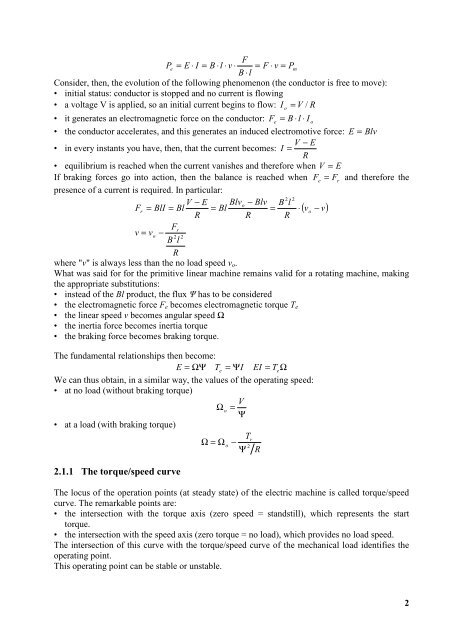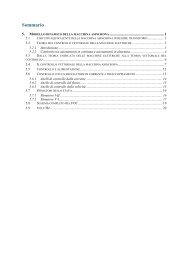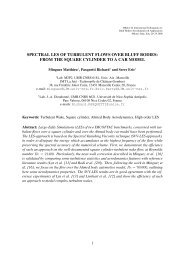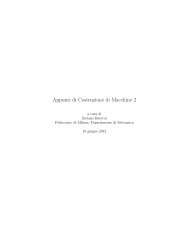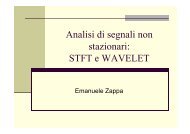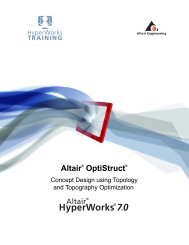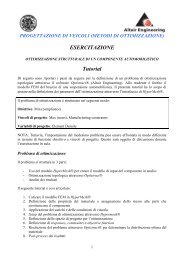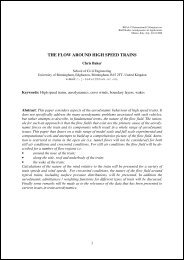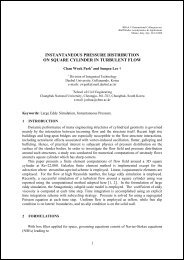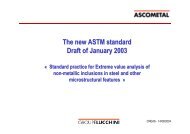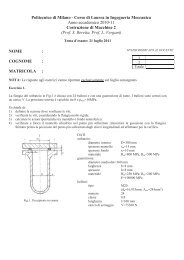Summary 2. The electromechanical energy conversion
Summary 2. The electromechanical energy conversion
Summary 2. The electromechanical energy conversion
Create successful ePaper yourself
Turn your PDF publications into a flip-book with our unique Google optimized e-Paper software.
F<br />
P<br />
e<br />
= E ⋅ I = B ⋅l<br />
⋅ v ⋅ = F ⋅ v = P m<br />
B ⋅l<br />
Consider, then, the evolution of the following phenomenon (the conductor is free to move):<br />
• initial status: conductor is stopped and no current is flowing<br />
• a voltage V is applied, so an initial current begins to flow: I o<br />
= V / R<br />
• it generates an electromagnetic force on the conductor: Fe<br />
= B ⋅ l ⋅ I<br />
o<br />
• the conductor accelerates, and this generates an induced electromotive force: E = Blv<br />
V − E<br />
• in every instants you have, then, that the current becomes: I =<br />
R<br />
• equilibrium is reached when the current vanishes and therefore when V = E<br />
If braking forces go into action, then the balance is reached when F<br />
e<br />
= Fr<br />
and therefore the<br />
presence of a current is required. In particular:<br />
2 2<br />
V − E Blvo<br />
− Blv B l<br />
Fr<br />
= BlI = Bl = Bl = ⋅ ( vo<br />
− v)<br />
R R R<br />
Fr<br />
v = vo<br />
−<br />
2 2<br />
B l<br />
R<br />
where "v" is always less than the no load speed v o .<br />
What was said for for the primitive linear machine remains valid for a rotating machine, making<br />
the appropriate substitutions:<br />
• instead of the Bl product, the flux Ψ has to be considered<br />
• the electromagnetic force F e becomes electromagnetic torque T e<br />
• the linear speed v becomes angular speed Ω<br />
• the inertia force becomes inertia torque<br />
• the braking force becomes braking torque.<br />
<strong>The</strong> fundamental relationships then become:<br />
E = ΩΨ Te<br />
= ΨI<br />
EI = TeΩ<br />
We can thus obtain, in a similar way, the values of the operating speed:<br />
• at no load (without braking torque)<br />
V<br />
Ωo<br />
=<br />
Ψ<br />
• at a load (with braking torque)<br />
<strong>2.</strong>1.1 <strong>The</strong> torque/speed curve<br />
Ω = Ω<br />
−<br />
T r<br />
o 2<br />
Ψ<br />
<strong>The</strong> locus of the operation points (at steady state) of the electric machine is called torque/speed<br />
curve. <strong>The</strong> remarkable points are:<br />
• the intersection with the torque axis (zero speed = standstill), which represents the start<br />
torque.<br />
• the intersection with the speed axis (zero torque = no load), which provides no load speed.<br />
<strong>The</strong> intersection of this curve with the torque/speed curve of the mechanical load identifies the<br />
operating point.<br />
This operating point can be stable or unstable.<br />
R<br />
2


